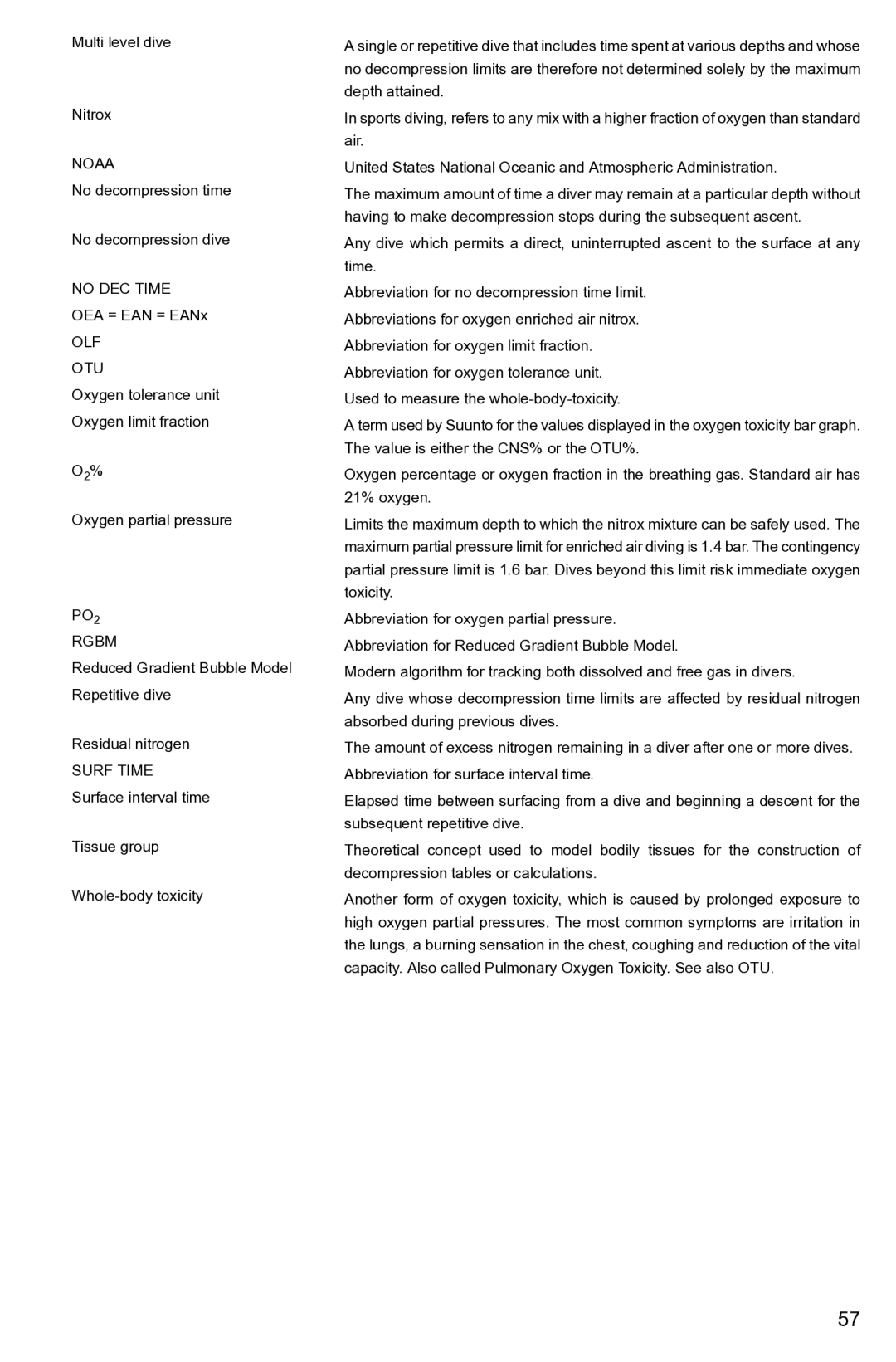Multi level dive
Nitrox
NOAA
No decompression time
No decompression dive
NO DEC TIME
OEA = EAN = EANx
OLF
OTU
Oxygen tolerance unit
Oxygen limit fraction
O2%
Oxygen partial pressure
PO2
RGBM
Reduced Gradient Bubble Model Repetitive dive
Residual nitrogen
SURF TIME
Surface interval time
Tissue group
A single or repetitive dive that includes time spent at various depths and whose no decompression limits are therefore not determined solely by the maximum depth attained.
In sports diving, refers to any mix with a higher fraction of oxygen than standard air.
United States National Oceanic and Atmospheric Administration.
The maximum amount of time a diver may remain at a particular depth without having to make decompression stops during the subsequent ascent.
Any dive which permits a direct, uninterrupted ascent to the surface at any time.
Abbreviation for no decompression time limit.
Abbreviations for oxygen enriched air nitrox.
Abbreviation for oxygen limit fraction.
Abbreviation for oxygen tolerance unit.
Used to measure the
A term used by Suunto for the values displayed in the oxygen toxicity bar graph. The value is either the CNS% or the OTU%.
Oxygen percentage or oxygen fraction in the breathing gas. Standard air has 21% oxygen.
Limits the maximum depth to which the nitrox mixture can be safely used. The maximum partial pressure limit for enriched air diving is 1.4 bar. The contingency partial pressure limit is 1.6 bar. Dives beyond this limit risk immediate oxygen toxicity.
Abbreviation for oxygen partial pressure.
Abbreviation for Reduced Gradient Bubble Model.
Modern algorithm for tracking both dissolved and free gas in divers.
Any dive whose decompression time limits are affected by residual nitrogen absorbed during previous dives.
The amount of excess nitrogen remaining in a diver after one or more dives.
Abbreviation for surface interval time.
Elapsed time between surfacing from a dive and beginning a descent for the subsequent repetitive dive.
Theoretical concept used to model bodily tissues for the construction of decompression tables or calculations.
Another form of oxygen toxicity, which is caused by prolonged exposure to high oxygen partial pressures. The most common symptoms are irritation in the lungs, a burning sensation in the chest, coughing and reduction of the vital capacity. Also called Pulmonary Oxygen Toxicity. See also OTU.
57
